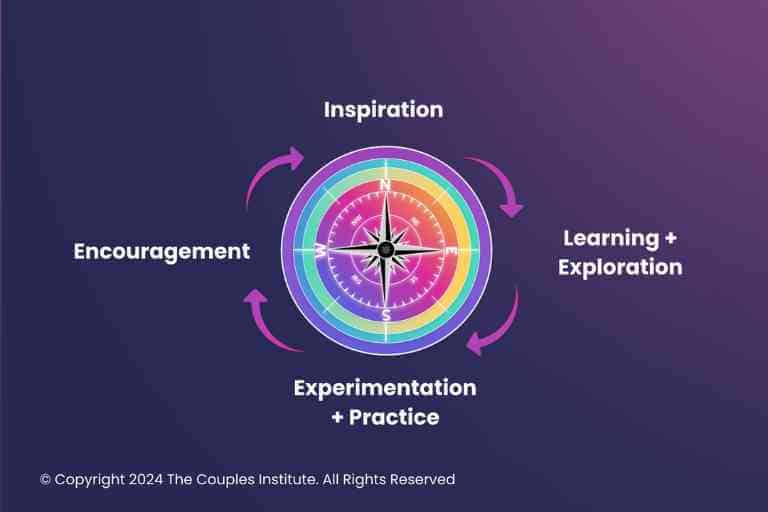
Highlights from the Psychotherapy Networker Conference
I just recently returned from the Psychotherapy Networker Symposium that took place March 22-24, in Washington, DC! As you may know, I like to share
In this newsletter, we look at the issue of how you establish contact in the early sessions of couples therapy. Most graduate school courses teach the importance demonstrating unconditional positive regard for our clients. This is taught as a primary way to make good contact. While it can work well with individual clients, it's not as simple in the more complex triangle of couples therapy.
Couples often show us many of their destructive or dysfunctional behaviors in the early sessions. We certainly don't want to show unconditional positive regard or acceptance for these behaviors. Also, partners watch carefully to see what we accept about the other. If we are too accepting, they may leave believing we are not strong enough to handle them. (And, they may be right!)
Here are some ways we've found to establish positive contact.
1. Start with a feeling-oriented question.
We often start the first session by asking, “How do you feel about being here even though we haven't done anything yet?” This will often give you immediate feedback about the degree of change motivation for each person. The partner who expresses relief or an optimistic feeling about therapy will often be easier for you to establish rapport. Look to this person to likely to make the initial effort to create change. The partner who says, “I didn't want to come – I only came because my spouse wanted it” or “I don't believe in therapy” will be testing you and will make it more difficult to establish contact. They are not the person who you look to make the initial change to improve the interactions.
2. Recognize that couples therapy is more stressful in some ways than individual therapy.
One initial generic bonding statement can be, “Couples often feel some stress about coming to therapy because the initial objectives seem to be incompatible. In individual therapy, the client determines the focus of change but in couples therapy there is often a struggle about where to focus. This is normal for most couples and is part of the process of learning how to become more collaborative and better communicators.
3. Take enough time to hear each partner's story.
This is why we recommend two hours for the first session. Try to elicit their goals, hopes, dreams, and desires. Help them create an image of how they want the relationship to be and how they aspire to be (individually) in their relationship. This creates balance to their expressed problems and aids your diagnosis. Sometimes one or both have great trouble describing how they would like their relationship to look like. Without some clear aspirations, they will simply regress under tension or stress because they have nothing to pull them forward. This is a great follow up approach to clarifying and understanding their individual frustrations.
4. Work to understand the problem cognitively.
The partners will be checking to be sure you really understand what they are saying and the importance of it. The more you ask helpful and insightful questions, the more you communicate that you are thinking deeply about what they are saying. When you ask a revealing question that enables them to attain a new insight, they will experience some relief and relax into a deeper level of contact with you. It can be reassuring to let them know their struggles are fairly common.
5. Work to understand the problem affectively.
What make most people feel understood is letting them know you understand their dilemma at both the cognitive and emotional level. Once you are certain that you do understand a partner's feelings, feed the feelings back to them. When you are on target with your feedback, they will give non-verbal cues like head nods, small smile etc to communicate you are on target. When you give feedback, describe it as there is a part of them that has this problem. Basically, you are communicating only a part of them has this problem which makes it easier for them to hear what you are saying. It reduces the likelihood of being “yes butted.” For example, “There is a part of you that feels trapped. That part of you feels hopeless to make a dent in these negative patterns on your own.”
Communicating that there is “only” a part of them that feels this way implies you can see other parts of them and they re not a completely and totally hopeless case.
6. Empathically embellish their feelings.
The more you can empathically embellish the affect from each partner's perspective, the deeper your level of contact will be. To expand on the statement above, you might add, “There is a part of you that feels trapped. You feel hopeless to make a dent in these negative patterns on your own. That part of you moves to despair. It seems like you have tried everything and that no matter what you say or do, nothing changes, and you are beside yourself with frustration.”
To take this even further, you might add, “It seems like sometimes you try to get out of the trap by approaching Charlie and saying, ‘we need to talk.' He glazes over or withdraws, and your fear increases. You say to yourself, ‘I'm going to have to live in a barren, empty marriage forever or have to get a divorce.' Either choice seems horribly painful.”
While you are empathically embellishing the feelings, you are totally immersed in this partner's world view. At this stage we have no qualms looking like we are taking sides.
The stronger you can communicate that you truly understand their predicament, the more allowance they will give you later when you confront and challenge their dearly held assumptions or favorite defensive responses.
7. Make contact with Partner B by what you say to partner A.
This is a good approach to use when one spouse is not motivated. For this example, let's say that the wife is frustrated and the husband is not very motivated for therapy. Perhaps the wife was the first to talk. She spent a long time telling you about how he withdraws and gets passive-aggressive. After you have established contact with her, you might ask, “When you feel despair, how might you respond in an ineffective way? This is designed to elicit the part of her that persecutes her partner. Now you make explicit what she does that antagonizes her partner. You can do this before you talk to her partner (particularly if he doesn't want to be there). You know that nothing that she or you have said so far will increase his motivation to change.
Here's one way to make good a good connection with Nick while talking to his wife, “When you get frustrated with Nick's behavior, how do you zap him?” Or you might hypothesize some of Nick's frustration. “When you explode, sometimes it must feel to Nick like it comes out of left field. He is probably not aware how lonely you've been feeling.” If you are empathic and compassionate when hypothesizing about Nick, you let him know that you are not colluding with his wife in seeing him as the bad guy.
In this last scenario, you have described some of the repeating patterns, let each person know you have an idea of their individual distress, and indirectly communicate you know what you are doing. Houston we have contact!
Another way we establish contact is at the end of the initial session. We give the couple a copy of the brochure “Stepping Stones to Intimacy.” It describes the normal stages that couples go through, and it normalizes many of their problems. It helps partners understand that the challenges they face are part of normal couples' development. For more information on this brochure, see Stepping Stones.
"*" indicates required fields
 We respect your privacy.
We respect your privacy.
"*" indicates required fields
 We respect your privacy.
We respect your privacy.
I just recently returned from the Psychotherapy Networker Symposium that took place March 22-24, in Washington, DC! As you may know, I like to share

I’ve specialized in working with couples for 40 years. A “back-of-the-envelope” calculation tells me that’s about 33,000 hours of couples work. You can bet I’ve

Couples often come to therapy with high hopes, vulnerability, and a spoken desire for transformation. They also come with years of pain, hostility, and unresolved
US: +16465588656, 82302466709# or +16469313860, 82302466709#
Webinar ID: 82302466709
 We respect your privacy.
We respect your privacy.
Thank you for this informative site. I am a student doing Pastoral Care/counselling and it is an eye opener for me.
I’d love to connect with you and receive anything from you so I can learn.
Regards
Great article thanks you . I have read it before but find coming back to it always gives me more insights.